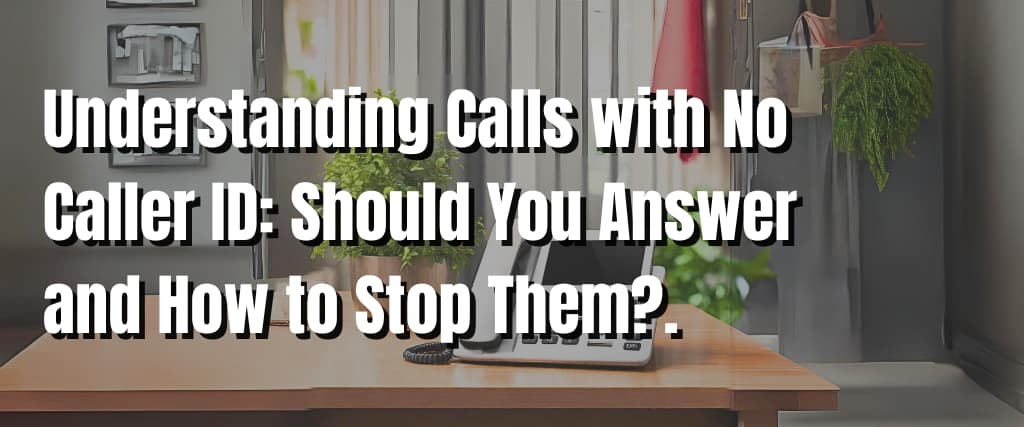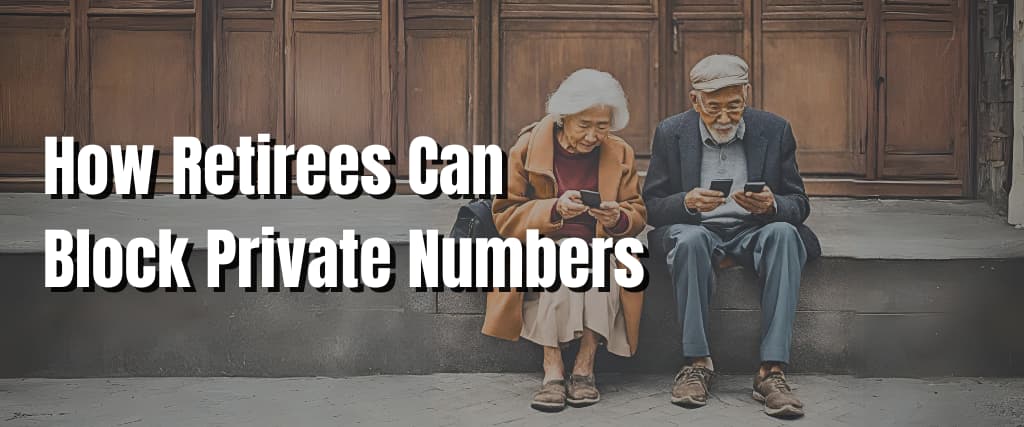Have you ever pondered the meaning of the message “No Caller ID” that appears on your phone’s screen? Is it best to accept calls from this label? Can you block these calls? To help you gain a better understanding, we go into these questions in more detail in the sections that follow.
How to Interpret No Caller ID:

When someone calls you while purposefully hiding their phone number, the phrase “No Caller ID” will appear on your phone’s display. Either you or all contacts will be affected by this decision. Sadly, this prevents you from returning the call or figuring out who it came from.
Callers can permanently or temporarily hide their numbers using the “Hide Number” option. It’s important to remember that not all phones have this feature, so check your device’s settings.
Setting Apart from an Unknown Caller:
Despite the fact that “No Caller ID” and “Unknown Caller” are commonly used synonymously, they differ significantly.
When your carrier’s service operator lacks the necessary information to reveal the caller’s ID, “Unknown Caller” shows on your screen. Technical difficulties and international calls are just two examples of scenarios when this term could apply.
Unknown Caller vs. No Caller ID

Both labels conceal the caller’s identity, but they come from different places. While “Unknown Caller” frequently occurs when network providers are unable to identify the number or when the call is international, “No Caller ID” implies that the number has been intentionally hidden. The “Unknown Caller” label occasionally may be a sign of possible fraud.
Blocking calls with “No Caller ID” on an iPhone:
Unwanted calls can be annoying, but certain cell phones provide options. The “Silence Unknown Callers” option on more recent iPhones routes these calls to voicemail. If someone leaves a message, you are notified. On devices running iOS 13, you must:
Launch Settings.
Go to the section for phones.
Slide the toggle to the right after selecting “Silence Unknown Callers”.
For older devices, you can stop these calls by adding a contact with the name “No Caller ID” and the number “000-000-0000,” then choosing “Block this Caller.”
The “Do Not Disturb Me” function, accessible on all Apple phones, provides an alternative. Turn on “Do Not Disturb” in Settings and accept calls from “All Contacts.”
On Android, you can prevent “No Caller ID” calls.

Even though Android phones don’t have a dedicated “No Caller ID” block feature, you can stop any unauthorized callers:
Get the Phone app open.
Click on the three dots.
Access Settings.
Decide on “Block Numbers.”
Switch on “Block Unknown Callers.”
Only calls without a clear caller ID will be blocked by this.
Remove Caller ID Mask:
Consider the following choices to find callers who are hiding:
Call your service provider and provide them your precise call information. If the calls are threatening, they might disclose the caller’s name.
For rapid results, use caller identification apps. To stop further calls, you can also add unknown numbers to your blacklist.
Conclusion:
Although both “No Caller ID” and “Unknown Caller” mask the caller’s identity, their countries of origin vary. Learn to unmask or block these calls to combat them. If you frequently receive these calls, think about using these tactics to take back control of your phone interactions.
FAQs:
Should You Answer Calls Without a Caller ID?
Since No Caller ID calls frequently entail frauds, spam, or harassment, it is advisable to ignore them. By responding, you run the risk of giving criminals access to your sensitive information. These phone calls typically come from telemarketing programmes designed to trick you into making pointless purchases. It is advisable to block and ignore these calls.
Can No Caller ID Be Traced?
There are various ways to find unknown calls. To maybe learn who made the call, speak with your service provider and share call data. Use caller identification software instead to stop such calls. Some service providers offer Anonymous Caller ID options that require callers to unblock their number in advance of connecting.




